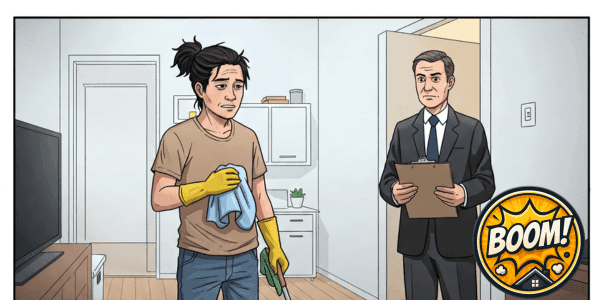How to File a Complaint Against a Landlord
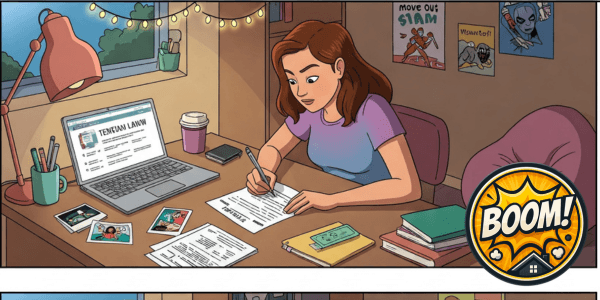
- How to File a Complaint Against a Landlord
- Landlord Violations? File a Complaint & Protect Your Tenant Rights
- Before You Begin: Essential Considerations
- Step 1: Research Your Legal Rights and Landlord Obligations
- Step 2: Document Landlord Violations
- Step 3: Submit a Formal Complaint to the Appropriate Authority
- FAQ: Filing a Complaint Against a Landlord
Landlord Violations? File a Complaint & Protect Your Tenant Rights
Is your landlord neglecting critical obligations? Learning how to file a formal complaint against a landlord is essential to resolve issues like unsafe living conditions or failure to repair and protect your tenant rights. This guide from Tenant Knowledge provides a step-by-step framework. Unresolved landlord violations can result in damages costing $200 to $2,000 or compromised health and safety. This guide, presented by RepairBoom, provides a formal, step-by-step framework for tenants to address landlord violations by filing a complaint, with specific reference to California statutes and broader guidance for other states. Optimized for how to file a complaint against a landlord, this resource empowers tenants to pursue tenant rights complaints with confidence.
Through three comprehensive steps—researching legal rights, documenting violations, and submitting a formal complaint—tenants can resolve disputes efficiently within 1–2 hours. Navigating even the most complex landlord violations. Supported by authoritative sources, including the U.S. Department of Housing and Urban Development (HUD) and the California Civil Rights Department (CRD), this guide ensures tenants act decisively. Download our complimentary Tenant Complaint Checklist to safeguard your rights and achieve a resolution
Before You Begin: Essential Considerations
Filing a complaint against a landlord demands meticulous preparation to ensure legal compliance and protect tenant interests:
- Lease Obligations: Examine your lease agreement to identify landlord responsibilities, such as maintenance or safety provisions, to establish grounds for a complaint.
- Evidence Requirements: Comprehensive documentation, including photos, videos, and written correspondence, is critical to substantiate claims, as emphasized by HUD’s tenant rights guidelines.
- Jurisdictional Variations: California mandates timely repairs under specific statutes, while other states have distinct timelines and remedies, necessitating localized research.
- Legal Implications: Improperly filed complaints or unauthorized actions (e.g., withholding rent without legal basis) may jeopardize deposits or tenancy rights, potentially costing $500–$1,000.
By planning ahead, you’ll minimize risks and fulfill renter responsibilities.
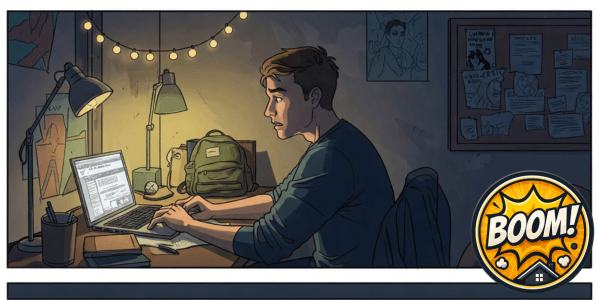
Step 1: Research Your Legal Rights and Landlord Obligations
A thorough understanding of your tenant rights and landlord obligations is the crucial first step before filing a complaint. To establish legal grounds for your complaint, you need to review your lease agreement and research applicable state and local laws to identify specific landlord violations.
Key Landlord Obligations & Common Violations to Research:
- Maintaining Habitable Living Conditions: Landlords are generally required to keep the property safe and livable. This includes ensuring functional plumbing, heating, electrical systems, weatherproofing, and being free from severe pest infestations.
- Addressing Necessary Repairs: Landlords must typically make repairs requested by the tenant, especially those affecting health and safety, within a reasonable timeframe defined by state or local law.
- Preventing Discrimination & Harassment: Landlords cannot discriminate based on protected characteristics (like race, religion, disability, family status, etc.) or engage in harassment or illegal retaliation.
- Following Proper Procedures: Landlords must adhere to legal requirements for things like entering your unit, increasing rent, or terminating a tenancy.
For More Information on Habitability Laws check out our guide Understanding Uninhabitable Conditions In California
How to Research Laws Specific to Your Location:
- Start with Your Lease Agreement: Identify any clauses related to maintenance, safety, or landlord responsibilities.
- Consult State-Specific Landlord-Tenant Laws: Search online for “[Your State] landlord tenant laws,” “[Your State] habitability laws,” or “[Your State] tenant rights for repairs.” Look for official state government websites (e.g., Attorney General, Department of Housing).
- Check Local City or County Ordinances: Many cities have additional protections or specific procedures. Search for “[Your City/County] housing code” or “[Your City/County] landlord tenant ordinances.”
Examples of State-Specific Requirements:
- In California:
- Habitability: Civil Code § 1941.1 mandates specific conditions landlords must maintain (functional utilities, weatherproofing, etc.). Failure to repair within a reasonable timeframe (typically 7–30 days, or 72 hours for urgent issues like no heat) violates this.
- Discrimination: The California Fair Employment and Housing Act (FEHA) prohibits discrimination and is enforced by the California Civil Rights Department (CRD).
- Tenant Remedies: Cal. Civ. Code § 1942 allows tenants to pursue remedies like repair-and-deduct or rent withholding, but only by adhering to strict legal procedures (including giving proper written notice and allowing the landlord a reasonable time to repair).
- In Other States (Examples):
- New York: The Warranty of Habitability (Real Property Law § 235-b) requires critical repairs, often within 24–72 hours for emergencies.
- Texas: Property Code § 92.052 typically allows landlords 7 days for essential repairs after receiving proper notice.
- National Framework: HUD’s tenant rights portal provides information, detailing protections against discrimination under the federal Fair Housing Act (42 U.S.C. § 3604).
Where to Find Help & Legal Guidance:
- University Legal Services: If you are a student, your university (e.g., UCLA) may offer free legal counseling or referrals through their student legal services office.
- Legal Aid Organizations: These non-profits provide free or low-cost legal assistance to eligible tenants facing housing issues.
- In California: LawHelpCA (www.lawhelpca.org)
- Nationwide: Legal Services Corporation (LSC) (www.lsc.gov)
- HUD Resources: HUD’s website (www.hud.gov) offers general information on tenant rights and filing housing discrimination complaints.
Researching these laws and resources ensures you are well-informed and can accurately identify whether a violation has occurred before proceeding.
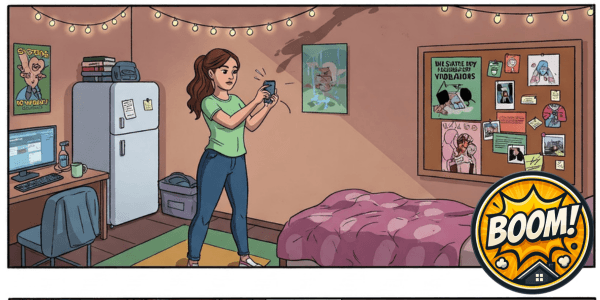
Step 2: Document Landlord Violations
Step 2: Document Landlord Violations Thoroughly
Comprehensive documentation is essential to substantiate your tenant rights complaints, whether addressing landlord violations like habitability issues or filing a housing discrimination complaint. Dedicate time to compiling clear evidence that demonstrates the issue and its impact.
Key Methods for Documenting Violations:
- Photos and Videos:
- Use your smartphone or camera to capture timestamped visuals of the violations.
- Take wide-angle shots to show context (e.g., a flooded bathroom, the exterior of a building).
- Take close-up shots to show detail (e.g., mold on a wall, a broken fixture, pest infestation).
- Examples: Water leaks, mold growth, structural damage, broken appliances, lack of heat, pest issues.
- Maintain a Detailed Log:
- Keep a written or digital log specifically for the issue.
- Record the following:
- Date and time you first discovered the violation.
- A clear, objective description of the issue.
- The specific impact the violation has (e.g., “causing water damage,” “unit is dangerously cold,” “triggering allergies”).
- Dates and details of all communication with your landlord about the issue (calls, emails, visits).
- Example Log Entry: “Nov 1, 2024: Noticed significant mold growth on the bathroom ceiling near the vent. Causing a strong musty smell and coughing. Took photos.”
- Keep Records of All Communication:
- This includes copies of letters, emails, text messages, and notes from phone calls or in-person conversations with your landlord regarding the problem.
- For formal repair requests, send them in writing via email (request a read receipt if possible) or certified mail (retain your receipt and the delivery confirmation). This provides proof you notified the landlord.
Why Comprehensive Documentation is Crucial:
- Provides Proof: Concrete evidence makes your claims undeniable.
- Required by Authorities: Agencies that handle tenant rights complaints (like the California Civil Rights Department (CRD) for discrimination, local housing authorities like the LAHD, or HUD) require documentation to investigate.
- Offers Leverage: Presenting clear documentation to your landlord often prompts them to act to avoid official complaints or legal action.
- Creates a Formal Record: Establishes a timeline of the violation and your efforts to resolve it, which is vital if escalation is necessary.
- Example Impact: A tenant in California who meticulously documented persistent mold was able to use that evidence to secure $2,500 in remediation costs through action with the LAHD.
Using Documentation in Your Written Communication with the Landlord:
Before filing a formal complaint with an outside authority, send a clear, written request for repair or resolution directly to your landlord, backed by your documentation.
- Clearly describe the landlord violations or issue(s).
- Reference the applicable laws or lease clauses you researched in Step 1 (e.g., state that the conditions violate your right to habitable living conditions under California Civil Code § 1941.1).
- State the specific action you require the landlord to take.
- Set a reasonable deadline for the repair or resolution, referencing state/local laws if they specify timelines (e.g., “Please complete the repair within 7-14 days,” or “within 72 hours for this emergency issue as required by law”).
- Attach your photos/videos or reference your detailed log.
Sending this detailed communication, supported by strong documentation, often prompts landlords to act to avoid further legal scrutiny. If the landlord remains unresponsive or fails to resolve the issue within the specified timeframe, proceed to Step 3 to file a formal complaint with the appropriate authority.
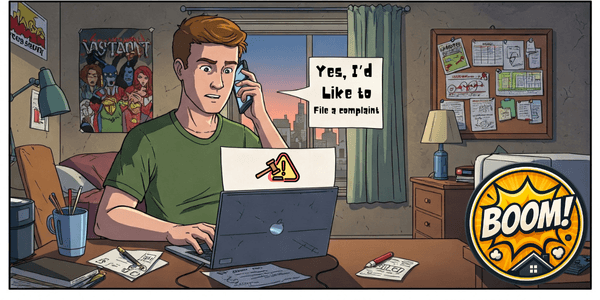
Step 3: Submit a Formal Complaint to the Appropriate Authority
If landlord violations remain unresolved, filing a formal complaint with the relevant authority is the next step. Allocate 30–60 minutes to prepare and submit your tenant rights complaints, leveraging evidence from Step 2.
In California, tenants may file with:
- California Civil Rights Department (CRD): For discrimination, harassment, or retaliation, submit a complaint within one year via www.calcivilrights.ca.gov or by calling (800) 233-3212. The CRD enforces FEHA, addressing violations like discriminatory evictions or refusal to accommodate disabilities.
- Local Housing Authorities: For habitability issues, contact municipal agencies, such as the LAHD in Los Angeles (housing.lacity.gov, (866) 557-7368). The LAHD investigates violations of the Rent Stabilization Ordinance and housing codes, potentially ordering repairs or fines.
- Health Departments: Report health hazards, such as mold or pest infestations, to county health agencies, which can mandate corrective action.
For other states, options include:
- State Housing Agencies: Contact state-specific departments, such as Colorado’s Division of Housing (cdola.colorado.gov/housing, (303) 864-7810) or New York’s Division of Housing and Community Renewal (hcr.ny.gov, (866) 275-3427).
- HUD: For discrimination in federally assisted housing, file within one year at www.hud.gov or (800) 669-9777, per the Fair Housing Act.
- Local Tenant Advocacy: Tenant unions, like the Chicago Tenants Union, offer mediation or referrals.
Legal aid is vital for navigating complex cases with landlord violations. In California, LawHelpCA (www.lawhelpca.org) connects tenants to free legal services, while the Legal Services Corporation (www.lsc.gov) supports tenants nationwide. University counselors, particularly at institutions with legal clinics (e.g., UC Berkeley’s Student Legal Services), can refer students to tenant unions or pro bono attorneys. Follow up with agencies regularly, as investigations may lead to mediation, repairs, or penalties.
FAQ: Filing a Complaint Against a Landlord
What constitutes grounds for filing a complaint against a landlord?
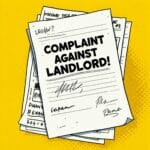
Grounds for filing a tenant rights complaint include landlord violations such as habitability issues, discrimination, or harassment. Habitability violations occur when a landlord fails to maintain essential living conditions, such as repairing broken plumbing, addressing mold, or ensuring functional heating, which California’s Civil Code § 1941.1 mandates as a landlord’s duty to provide a safe, functional premise. Discrimination, such as refusing to rent based on race or disability, violates the Fair Housing Act, while harassment might include threats or unwarranted eviction attempts. For example, if your landlord ignores a leaking pipe for weeks, causing water damage, this could justify a complaint for failing to uphold habitability standards.
How do I file a complaint against my landlord in California?

To file a complaint against a landlord in California, address discrimination issues by submitting a detailed complaint to the California Civil Rights Department (CRD) within one year of the incident at www.calcivilrights.ca.gov or by calling (800) 233-3212; include evidence like emails or photos showing discriminatory behavior. For habitability issues, such as a broken heater, file with the Los Angeles Housing Department (LAHD) at housing.lacity.gov if you’re in Los Angeles, or contact your local jurisdiction’s housing authority, providing detailed evidence like timestamped photos of the issue and prior repair requests.
What are the options for tenants in other states?

Tenants outside California can address landlord violations by contacting their state housing agencies or the U.S. Department of Housing and Urban Development (HUD). For habitability issues, state agencies like New York’s Division of Housing and Community Renewal (hcr.ny.gov, (866) 275-3427) investigate complaints about unsafe conditions, such as lack of heat; check your state’s government website for the appropriate agency. For discrimination complaints, file with HUD within one year at www.hud.gov or call (800) 669-9777, ensuring evidence like photos, written correspondence, or witness statements supports your claim. For example, a Texas tenant filed a HUD complaint after being denied a lease renewal due to race, leading to a mediated resolution with the landlord.
Where can I access legal aid or university support?

California tenants can access free or low-cost legal aid through LawHelpCA (www.lawhelpca.org), which connects you to local organizations offering guidance on tenant rights complaints, such as navigating habitability disputes or discrimination claims. Nationally, the Legal Services Corporation (www.lsc.gov) provides similar support, helping tenants in other states find legal assistance based on income eligibility. For college students, university legal clinics, such as UCLA’s Student Legal Services, offer referrals to tenant advocacy groups or pro bono attorneys; contact your university’s student affairs office to inquire about available resources. For instance, a UC Berkeley student used their legal clinic to draft a complaint against a landlord for unlawful eviction, securing a favorable settlement.
Other Articles by Louis Oconnor
Completing Your Move-In Condition Report | Free Guide
Landlord Not Renewing Lease? Understanding Your Rights | Free
Move-Out Inspection: What Your Landlord Is Really Looking For | Free Guide


